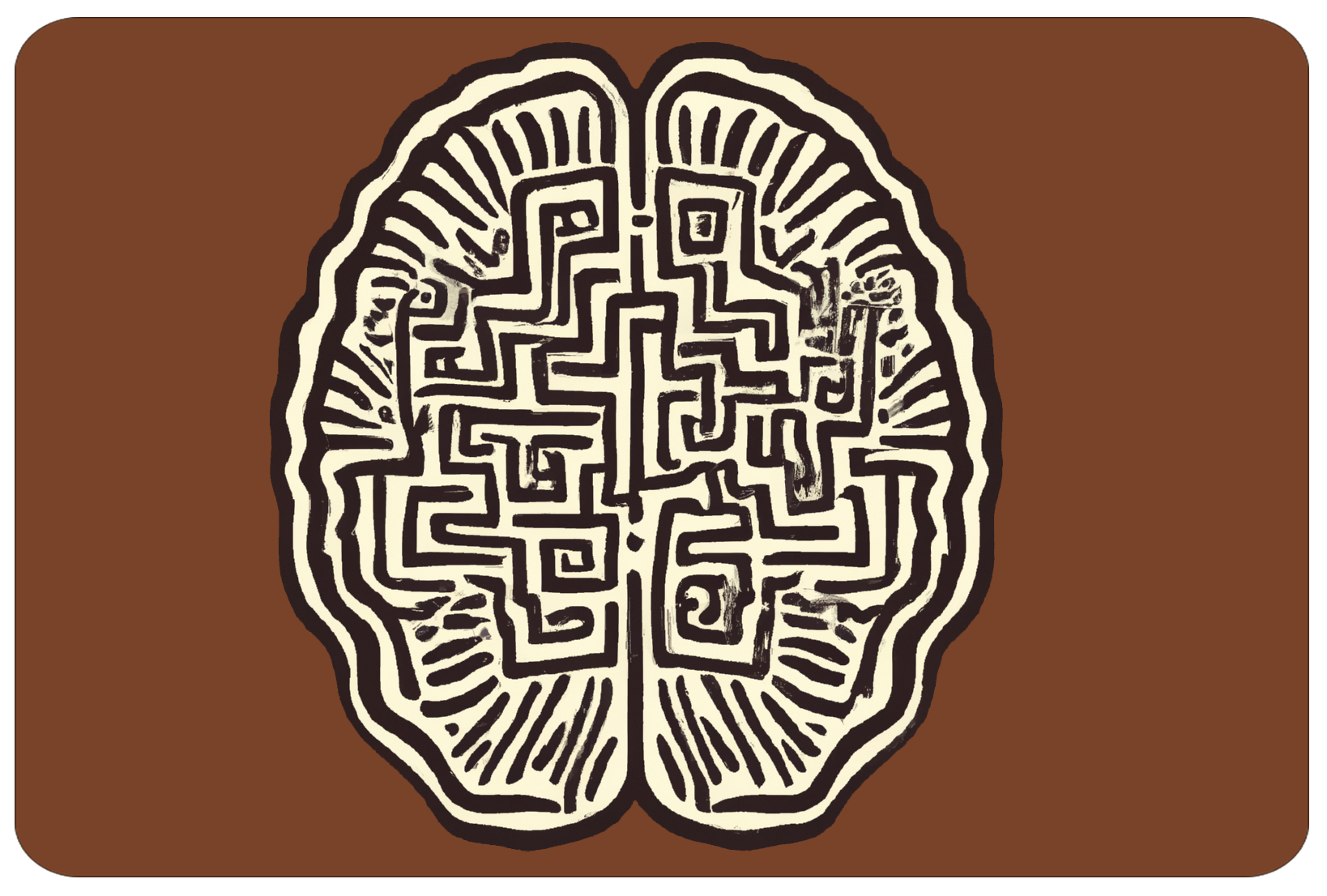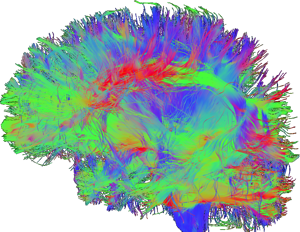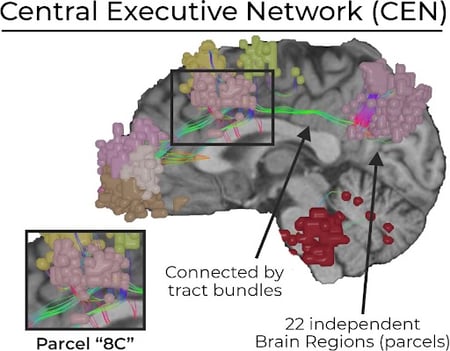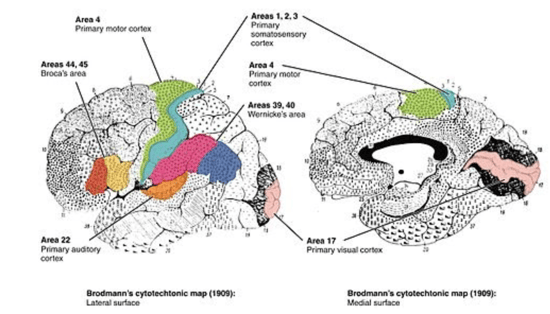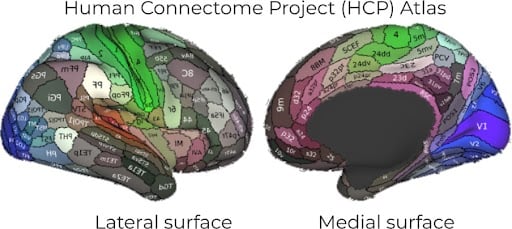Although significant improvements have been made in the field of brain mapping since the original work of Brodmann, van Ecomo and Koskinas, a glaring conceptual issue with utilizing atlas-based approaches remained to be solved. That is, how could a universal atlas be applied to individuals where the cortex is physically distorted?
Whilst most image processing pipelines are able to account for abnormalities such as large intracranial volumes, previous atlassing techniques could not account for when the cortex had been displaced due to the presence of a tumor or developmental disorder. The solution came from the insight that white matter tracts are largely preserved in almost all cases of anatomical distortions to the brain.
For example, the growth of a tumor may push surrounding gray matter in the direction of its mass effect, but it will very rarely sever any connection between two distinct gray matter regions. By utilizing diffusion weighted imagery (DWI) to map the white matter in anatomically distorted brains, a “structural connectivity profile” can be generated. By then comparing the start and end points of these white matter tracts against healthy brains, volumes of gray matter (in which white matter starts or ends) can be assigned their most likely brain region. The corollary of this process is that in the case where this tumor is surgically resected, the cavity left behind will correctly remain unassigned to any brain region - as the volume which it takes up will not contain any neural tissue whatsoever.
Consistent with the naming and distribution of the 360 parcels determined by the HCP atlas, Omniscient’s “Structural Connectivity Atlas” (SCA)7 includes an additional 19 subcortical regions for a total of 379 unique brain regions. It employs a fully automated machine-learning approach which constantly improves in accuracy and reliability as more data is acquired to train, test, and improve the model.
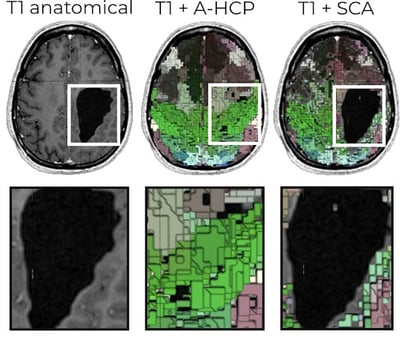
The o8t 379 region Structural Connectivity Atlas (SCA), demonstrating its sensitivity to necrotic tissue where a tumor once resided.
